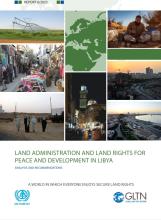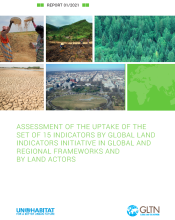Land Library
Welcome to the Land Portal Library. Explore our vast collection of open-access resources (over 74,000) including reports, journal articles, research papers, peer-reviewed publications, legal documents, videos and much more.
/ library resources
Showing items 1 through 9 of 486.This report is a contribution towards the improvement of land management and land administration in Libya.
To ensure a better and more sustainable future for all, the 2030 Agenda for Sustainable Development (“the 2030 Agenda”) has identified 17 Sustainable Development Goals (SDGs) to be achieved by 2030.
The Global Land Indicators Initiative (GLII) platform was established in 2012 through the joint effort of United Nations Human Settlements Programme (UN-Habitat), the World Bank and Millennium Challenge Corporation with the aim of making global-scale monitoring of land governance a reality by 202
Landscapes changes are a result of a wide range of interactions between actors and driving forces (DFs).
The growing awareness of the negative impact of agriculture on the natural environment creates social expectation towards the reduction of this impact through the pro-environmental activities of farmers.
Notwithstanding their crucial role in ecosystem functionality, large carnivores generally entail economic costs to hunters due to competition for the same prey. This cost could potentially vary depending on carnivore density and the game hunting values at stake.
Although still at incipient stages in most areas, agricultural land markets in sub-Saharan Africa (SSA) are growing rapidly. While the literature on the region’s land markets is expanding, there has been little attention thus far paid to the drivers of land rental prices.
National parks and other forms of protection ensure the natural values in the European Union. However, a significant part of protected areas is under agricultural cultivation, and the two sectors have been kind of opponents to each other for a long time.
It is essential to understand how urban plans affect urban growth patterns in order to improve current urban planning and management systems.



